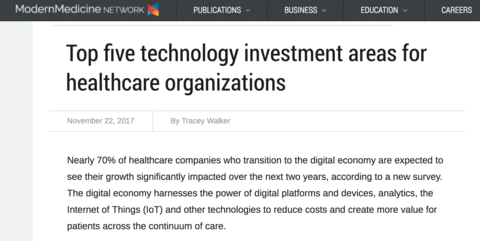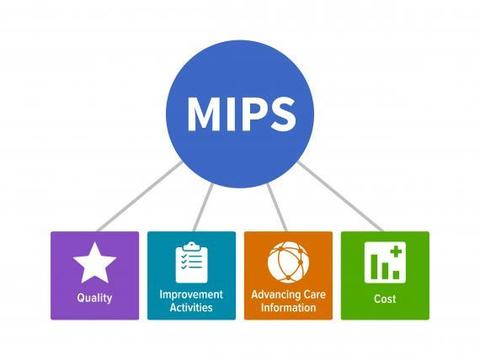Predictive analytics have a critical role to play in proactive clinical care
Nov 27, 2017
Healthcare is undergoing a major transition from fee-for-service to value-based care, focused on improving outcomes while safely reducing costs. Along this journey, care teams find themselves equipped with outdated tools that drive a reactive, "let's fix it," care mentality.
However, to reach these new goals, the industry will need to shift the delivery of healthcare to become more proactive and patient-centered. While this concept of proactive care has always been an industry-wide goal, it still has yet to be accomplished, rendering the question "how do we make this happen?"
The answer is combining data from electronic health records (EHR), specifically vital signs, lab results, and nursing data with predictive analytics to help foster a proactive mindset. By leveraging analytics, we can transform the way we provide care.
Imagine for a moment that you knew a patient's condition was deteriorating before he or she coded, or entered an emergency state - this would allow you to intervene sooner and save a life before their condition worsens drastically or irreversibly. Predictive analytics provide care teams with this insight, allowing earlier intervention and enabling a shift from the reactive mentality to proactive patient care.
This shift in care benefits not only healthcare providers, but also patients and their families, because it creates more time to make clinical decisions and improve the care team's workflow. For example, rapid response teams (RRTs) which are made up of seasoned clinicians, who come to the rescue when a patient's health is deteriorating quickly, benefit greatly from predictive analytics due to the nature of their role in the delivery of care. Unfortunately, RRTs show up only when there is a patient that will need to be treated and transferred to a higher level of care due to deterioration in their condition. With the power for care teams to be notified before a patient's deterioration occurs, we may see a shift in how RRTs work becoming more proactive than reactive. This shift in the clinical course of action will enhance the delivery of value-based care and enable hospitals to offer more proactive and personalized care.
Much like the RRT scenario, data has little impact in many response situations, because it's used too late or is inaccessible. This is often the case because health data is siloed - accessing and translating the data into actionable information is an industry-wide obstacle. To overcome these challenges and use data effectively in clinical care situations, health data must be better organized and more easily accessible. Properly organized data allows analytics to be used broadly across the care team and between providers.
The challenges to accessing data and leveraging analytics are not limited to the healthcare industry. Nonetheless, healthcare data comes with its own security and privacy laws which make it difficult to access, share and transmit. In addition, most health data in the EHR is unstructured. Recent studies estimate that of the 1.2 billion clinical documents produced annually in the U.S., 60 percent contain unstructured patient data. This in effect limits the amount of data that is accessible and ready to be used in a clinical setting. Once a higher rate of data access is achieved, the information provided can be used effectively to improve patient care.
Ultimately, the real benefit of leveraging health data through predictive analytics is that it can provide early warning signs of patient deterioration, enable sooner intervention and ultimately save more lives. Continued use of analytics will allow clinicians to work smarter, providing them with the ability to prioritize patients that are in most need of care and shifting the healthcare mindset from reactive to proactive - improving patient safety and saving lives.
Source: Med City News (View full article)
Dan Corcoran | Permalink | Comments (0)









